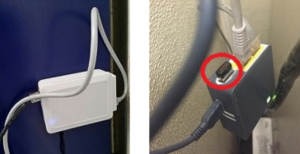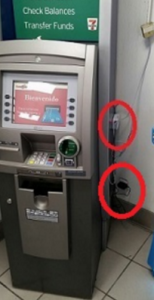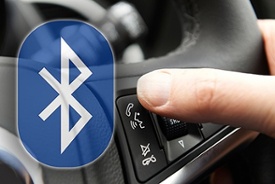If you have ever walked up to an ATM to withdraw cash only to decide against it after noticing a telephone or ethernet cord snaking from behind the machine to a jack in the wall, your paranoia may not have been misplaced: ATM maker NCR is warning about skimming attacks that involve keypad overlays, hidden cameras and skimming devices plugged into the ATM network cables to intercept customer card data.
In an alert sent to customers Feb. 8, NCR said it received reliable reports of NCR and Diebold ATMs being attacked through the use of external skimming devices that hijack the cash machine’s phone or Internet jack.
“These devices are plugged into the ATM network cables and intercept customer card data. Additional devices are attached to the ATM to capture the PIN,” NCR warned. “A keyboard overlay was used to attack an NCR ATM, a concealed camera was used on the Diebold ATM. PIN data is then likely transmitted wirelessly to the skimming device.”
The ATM maker believes these attacks represent a continuation of the trend where criminals are finding alternative methods to skim magnetic strip cards. Such alternative methods avoid placing the skimmer on the ATM card entry bezel, which is where most anti-skimming technology is located.
NCR said cash machine operators must consider all points where card data may be accessible — in addition to the traditional point of vulnerability at the card entry bezel — and that having ATM network communications cables and connections exposed in publicly accessible locations only invites trouble.

A closer look at the two network cable card skimming devices that were attached to the stand-alone ATM pictured at the top of this story.
If something doesn’t look right about an ATM, don’t use it and move on to the next one. It’s not worth the hassle and risk associated with having your checking account emptied of cash. Also, it’s best to favor ATMs that are installed inside of a building or wall as opposed to free-standing machines, which may be more vulnerable to tampering.


